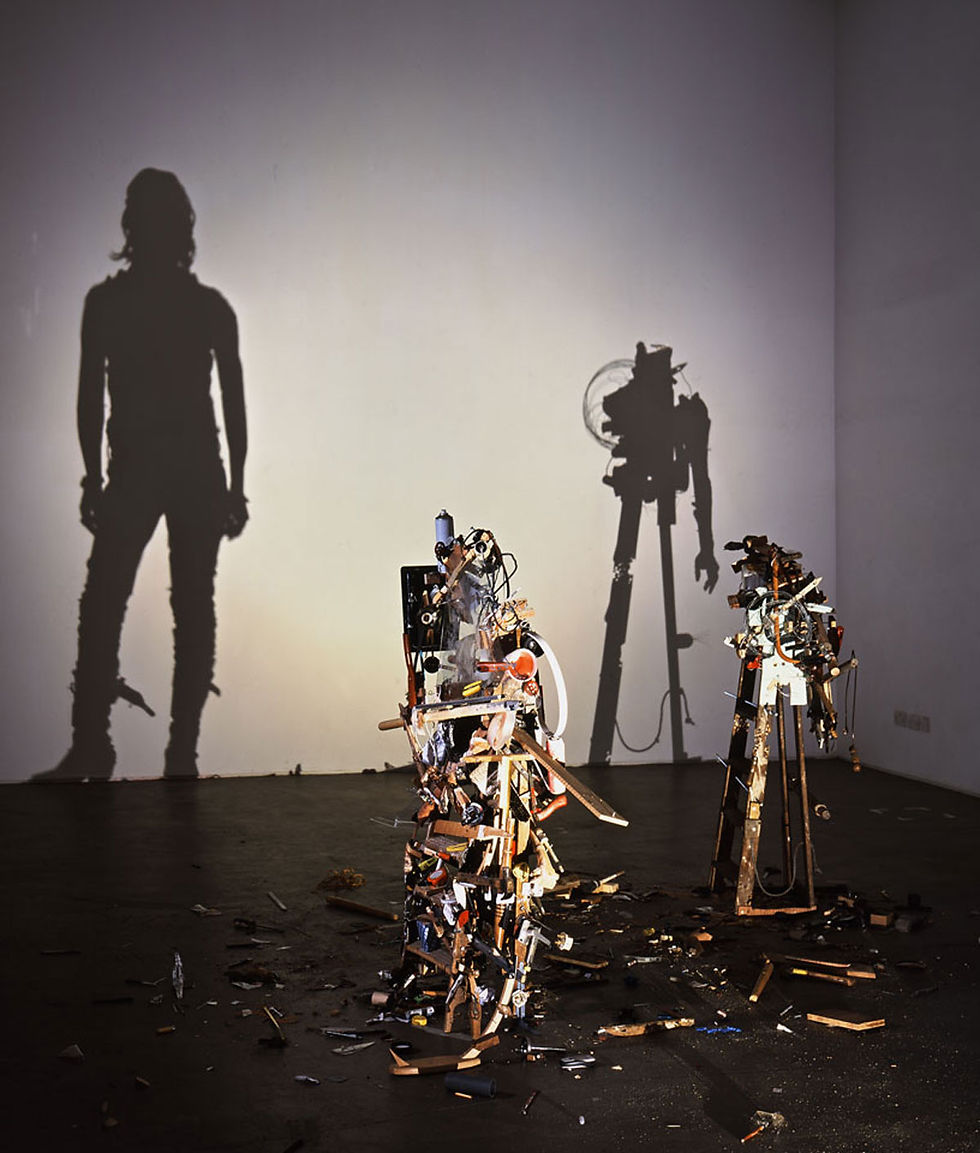TIM NOBLE & SUE WEBSTER
- week one research task
- Mar 30, 2017
- 2 min read


Tim Noble & Sue Webster, 2009 - 2010, Wild Mood Swings, wooden stepladders, discarded wood, light projector ,Tim: 178.5 x 110 x 167cm, Sue: 215 x 98.5 x 130cm


Tim Noble & Sue Webster, 2008 - 2009, Nasty Pieces of Work, 2 wooden stepladders, discarded wood, broken tools, light projector, 1: 166 x 86 x 171cm, 2: 156 x 101 x 191cm (left)
Tim Noble & Sue Webster, 1998, Dirty White Trash (with Gulls), 6 months' worth of artists' trash, 2 taxidermy seagulls, light projector (right)
TIM NOBLE & SUE WEBSTER
Tim Noble and Sue Webster are an artistic duo from the UK who are known for their diverse artistic image of light and shadow works. The team work with an extensive range of media and subject matter in their artwork; however, for this discussion I have directed my analysis towards a particular style of work. In this series, Noble and Webster assemble rubbish into forms that create shadows of people and things when light is shone through them. The works are constructed from all types of discarded household materials as well as scrap metal and taxidermy that aim to draw attention to the amount of waste produced by human’s excessive consumption of resources. Noble’s fierce opposition to the harming of the environment is evident in his response in an interview with i-D Magazine about the one thing he would change about the world, stating, “it would be nice to stop [screwing] up the globe, its environment for a start… We could just end up with lots of birds that are grey, which would be sacrilege to the great triumph of evolution and its extreme beauty and diversity” (2017). This conceptual underpinning to their work is emphasised in ‘Cold Death’ (2009) where the impacts of our abuse of the environment are vividly represented by two impaled heads.
Webster and Noble’s work is relevant to what we have been doing this week as we have been looking at rubbish and the artistic capacity of these forms. They use rubbish to change the traditional notion of rubbish as something used and lifeless to something that has power and can collectively galvanise thoughts and change surrounding overconsumption.
Draper, J 2017, ‘i-Q: tim noble and sue webster’, i-D Magazine, interview, 3 February, viewed 1 May 2017, <https://i-d.vice.com/en_au/article/i-q-tim-noble-and-sue-webster>.



Comments